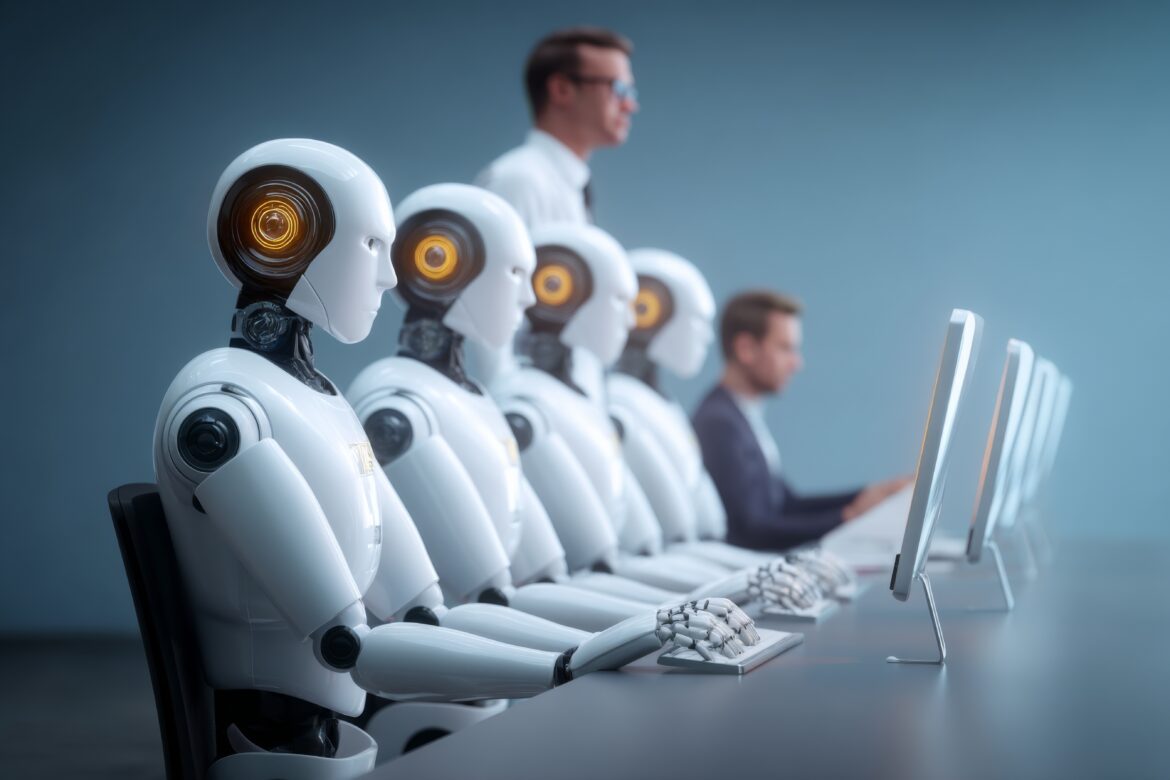Early-career workers aged 22 to 25 in jobs most vulnerable to artificial intelligence have experienced a 13 per cent decline in employment since late 2022, while older workers in the same fields continue to see job growth, according to new research from California’s Stanford University.
The study, published Aug. 26, analyzed payroll data from ADP covering millions of workers across tens of thousands of firms through July 2025. The researchers — Erik Brynjolfsson, Bharat Chandar, and Ruyu Chen — found the employment decline affects workers in occupations like software development and customer service, where AI tools can automate many tasks.
“Workers aged 22-25, we find a 12 log-point decline in relative employment for the most AI-exposed quintiles compared to the least exposed quintile, a large and statistically significant effect,” the researchers wrote.
Employment gaps emerge across age groups
The data shows stark differences between age groups in AI-vulnerable jobs. While workers aged 22 to 25 saw employment drop six per cent from late 2022 to July 2025 in the most AI-exposed occupations, workers aged 35 to 49 experienced employment growth of more than nine per cent during the same period.
Employment for workers in less AI-exposed occupations like nursing aides has remained stable or grown across all age groups, according to the study.
Overall U.S. employment continues growing robustly, but employment growth for young workers specifically has stagnated since late 2022, the researchers found. For workers aged 22 to 25 in the lowest three AI-exposure categories, employment grew six to 13 per cent with no clear age-based patterns.
Automation versus augmentation
The research distinguished between AI applications that automate work versus those that augment human capabilities. Employment declined for young workers in occupations where AI primarily automates tasks, but showed growth in occupations where AI use is most augmentative.
The study used data from Anthropic’s Economic Index, which analyzed millions of conversations with the Claude AI system to classify whether AI usage in specific occupations tends to replace human work or enhance it.
Compensation remains stable
Despite employment changes, the study found little difference in salary trends across age groups or AI-exposure levels. Annual base compensation showed less variation than employment patterns, suggesting wages won’t be impacted — at least in the short term.
“In contrast to our findings for employment, we find little difference in annual salary trends by age or exposure quintile, suggesting possible wage stickiness. If so, AI may have larger effects on employment than on wages, at least initially.”
Methodology and scope
The Stanford research team, led by Brynjolfsson, analyzed monthly payroll records from ADP, the largest payroll software provider in the United States. The sample included workers from firms that maintained consistent ADP records from January 2021 through July 2025.
Researchers measured AI exposure using established academic frameworks that assess which occupations face the greatest potential for AI automation or augmentation based on their task requirements.
The study controlled for firm-level factors that could influence hiring patterns, including interest rate changes and industry-specific developments. Results remained consistent when excluding technology companies and occupations suitable for remote work.
Implications for workforce planning
The findings suggest AI’s labour market effects may follow historical technology adoption patterns, where new innovations initially displace certain types of work before broader economic adjustments occur.
“The adoption of new technologies typically leads to heterogeneous effects across workers, resulting in an adjustment period as workers reallocate from displaced forms of work to new forms with growing labour demand,” the researchers noted.
The study represents one of the first large-scale analyses of AI’s employment effects using near real-time payroll data rather than survey responses or job posting information.
Researchers plan to continue tracking employment trends to determine whether current patterns accelerate or stabilize as AI adoption expands across industries.





